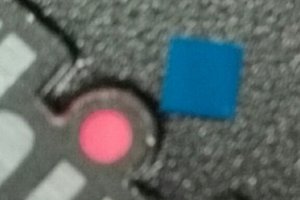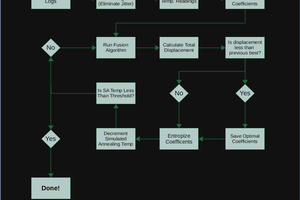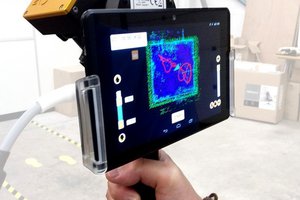Benewakes TFMINI Micro Lidar is a relative cheap and very small lidar system, and works well with an Arduino, getting the sensor data out of it is therefore relative easy. It didn't use a real laser but a strong infrared LED, but detectable distance in broad daylight is still big enough.
Main challenge for us is the slow update rate: With 2.3° field of view, scanning 180° in two directions will need 6125 measurements for the complete field if view. With 100 Hz update rate a full scan will take over a minute, far too long to be usable even for a pedestrian.
The basic idea is to not scan linear line by line, but like rapid eye movement update certain evenly distributed pixel over the whole image. Since most objects will be bigger than the field of view of the sensor, it is not necessary to update the neighbours directly as it would happen with linear scanning.
Furthermore, we can update the inner pixel (frontal view) with a higher frequency than the outer pixel (side view).
With rapid movements (and for a smaller and as silent as possible) servos as used for 3D scanning of a room with these LIDAR system is not possible.
This lead us to two possible options: Using DC motors without gears (again with a postion control feedback) or - which is more interesting - a sort of galvanometer. The LIDAR is light enough that such a modified system is possible, one option would be reusing the parts of a standard fan.
Since a geared servo solution is already well known, replacing the servos with DC drives without gears should be easy to do as a backup plan, we will instead first concentrate on a more compact version with hacked coils and LIDAR as direct driven axis.
We can then directly move the Lidar in the desired direction by applying a certain (PWM-)voltage on both coils, get the distance information from the LIDAR and move to the next target. The corresponding funtion can be therefore first random, then optimised on the use case (maybe even machine learning based upon standard world scenarios).
 JanThar
JanThar
 Frank.Muenzner
Frank.Muenzner

 Caleb W.
Caleb W.
 Mr.3d
Mr.3d